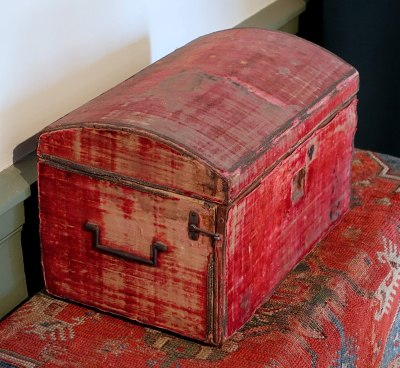
The world of antique furniture and the world of hackers rarely coincide, and perhaps the allure of the latest tech is greater for most of us than that of a Chipendale cabinet. But there are times when there are analagous situations in both worlds, so it’s worth taking a moment to consider something.

Antique furniture has survived for hundreds of years before being owned by today’s collectors. Along the way it picks up bumps and scrapes, wear, and even the occasional repair. Valuable pieces turn up all the time, having been discovered in dusty attics, cowsheds, basements, and all sorts of places where they may have been misused in ways that might horrify those who later pay big money for them. Thus there is a whole industry of craft workers in the field of furniture restoration whose speciality lies in turning the wreck of a piece of furniture into a valuable antique for the showroom.
The parallel in our community if you hadn’t already guessed, can be found in the world of retrocomputers. They are the antiques we prize, they come to us after being abused by kids and then left to languish in a box of junk somewhere. Their capacitors are leaking, their cases may be cracked or dirty, and they often possess the signature look of old ABS mouldings, their characteristic yellowing. This is caused by the gradual release of small quantities of bromine as the fire retardant contained within the plastic degrades under UV light, and causes considerable consternation among some retrocomputing enthusiasts. Considerable effort goes into mitigating it, with the favourite technique involving so-called Retr0bright recipes that use hydrogen peroxide to bleach away the colour.
Do We Lose Something In A Quest To Recreate Our Childhoods?

In the antique furniture world there are operators at all levels from the shysters pushing imitation furniture made last month in China to the specialist dealers in high-end genuine pieces. Antique restoration has strata to match, and at the quality end they do work to the highest possible standards.
Consider though, given a priceless antique that needs work, what is the objective? It would certainly be possible to return it to the same condition in which it left the cabinet maker’s workshop hundreds of years ago, but is that their aim? Instead they restore it to a very good condition but leave it with a patina of age. Shelves bow downwards slightly in the middle, there are slight marks under the polish, and the feet bear some of the scuffs they have picked up over the years. Over-restoration in which it looks too new just isn’t the thing, because then it ceases to look like the real thing that it is.
Spending a lot of time over the years around retrocomputers and retrocomputing enthusiasts, it’s interesting to make that comparison with antique furniture. Why do we not allow our antiques to wear with pride the patina acquired through the decades, and why do we prefer to pretend that it’s 1988 and they’ve just come out of the box? Is it because we’re really recreating our own childhoods (or perhaps those we wish we’d had) rather than appreciating the devices as relics in their own right?
With an increasing number of modern reproductions of classic cases and motherboards being produced, it seems to me that we’re blurring the line between the original and the reproduction just as an imitation furniture maker does to the genuine antique. Will we in time seek to differentiate our classic machines from the repro pretenders by the patina of age? Maybe it will be left to a future generation of retrocomputing collectors to make that jump.
Header: Mark Fosh, CC BY 2.0.
0 Commentaires